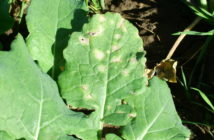A series of successful regional launch events has seen Syngenta’s new T2 SDHI fungicide launched to hundreds of growers and agronomists up and down the country.
Following on from the main product launch in November last year, the events have provided the opportunity for growers and agronomists to experience first-hand, at a local level, how the product, Elatus Era, is proven to deliver cereal disease control, whatever the situation.
Andrew Curtis, Syngenta’s cereal fungicide campaign manager explains, “The regional events have been a great success, and we’ve had really positive feedback from those who’ve attended.
“As we’re getting into the season, it’s timely that people who attended can see the practical disease control opportunity this product offers growers on the ground,” he adds.
“We wanted farmers and agronomists to go away from each of the events understanding how this SDHI can deliver a broad spectrum of activity against Septoria and rusts, especially when used preventatively at T2,” he says.
“With rusts becoming more of an unknown for growers and agronomists, it’s great we can showcase such solid results across the spectrum of diseases with this new SDHI. And this season is no different, rusts could be a big problem. It’s no longer just about Septoria,” says Mr Curtis.
Based on the novel active ingredient Solatenol in co-formulation with prothioconazole, Elatus Era was first synthesised in 2005. Since then, a global team of over 30 Syngenta experts have been involved in the research work to bring this new product to market, and over 1,700 field trials have been carried out across Europe, including the UK.
“This extensive R&D work is the backbone of the product development pipeline that’s enabled us to deliver an exciting new SDHI fungicide.
“The unique microscopy work that has been carried out has provided us with a complete understanding of the damage done inside the plant by Septoria and rusts before any visual signs appear. A visual confirmation that prevention is always better than curative control.
“From the biokinetic studies, we know that its measured rate of uptake, combined with the acropetal movement within the plant, from the base to the tip of the leaf, and slow rate of degradation are the key properties that provide long-lasting disease control.
“The extensive formulation and subsequent field application work means that Elatus Era has been optimised to deliver a consistent product with outstanding results in the field, which we have seen across the hundreds of trials we’ve carried out.
“This is a really exciting time for Syngenta,” says Mr Curtis. “It’s no mean feat bringing a new product to market and we want growers and agronomists to know everything about the product biology and how it works, which has been the principle aim of the regional events.”




